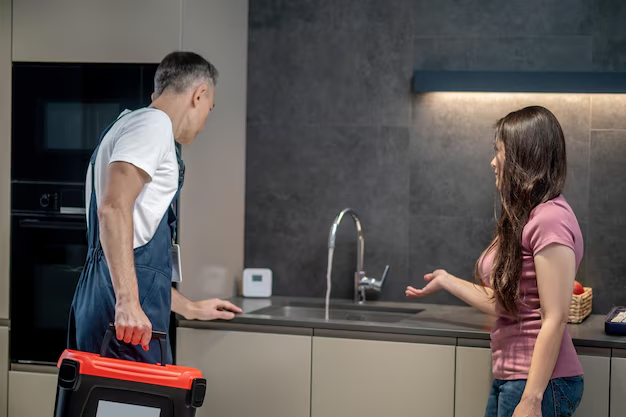What You Need to Know: Turning Off Your Refrigerator's Water Supply
Is your refrigerator risking a flood? Knowing how to cut off the water supply to your fridge is crucial for preventing potential leaks and maintaining your appliance. Whether you're moving your fridge, performing maintenance, or dealing with a leak, understanding this process can save you time and stress. Let's dive into the practical steps to accomplish this task safely and efficiently.
Why You May Need to Turn Off the Water Supply
Before we get into the how-tos, it's essential to understand the whys. Turning off the water supply to your refrigerator might be necessary for several reasons:
- Leak Prevention: If you notice any water pooling around your fridge, it's a sign that something might be wrong with the water connection.
- Maintenance or Repair: Appliances occasionally need servicing. Whether replacing a filter or conducting a repair, turning off the water can prevent unnecessary spills.
- Moving the Refrigerator: When relocating the appliance, disconnecting the water line makes the move smoother and reduces the risk of accidental water leaks.
- Renovations: During kitchen renovations, cutting off the water supply can prevent accidents or damage to the plumbing system.
Step-by-Step Guide to Turning Off the Water Supply
Step 1: Identifying the Water Supply Line
Most refrigerators with ice makers or water dispensers have a small, flexible water line running from the water source to the back of the appliance. Here’s how to locate it:
- Check Behind the Fridge: Often, the water supply line is visible when you move your refrigerator away from the wall. It's usually a small, plastic, or copper tube.
- Identify the Shut-Off Valve: The shut-off valve, also known as the saddle valve, is typically located behind the fridge or under the sink. In some cases, it might be in the basement or a utility closet.
Step 2: Shutting Off the Valve
Once you've located the valve, it’s time to turn it off. The shut-off process involves:
- Quarter Turn Valves: These valves require a 90-degree turn. Turn the handle clockwise a quarter turn until it stops.
- Gate Valves: Spin this type of valve clockwise until it’s fully closed.
Step 3: Verifying the Water Supply is Off
To ensure the water supply is completely turned off, perform this quick check:
- Dispense Water from the Fridge: Try using the water dispenser or ice maker. If no water comes out, you’ve successfully turned off the supply.
Troubleshooting Common Issues
Despite following the steps, issues may arise. Here’s how to handle common problems:
- Valve Won’t Turn: If the valve is stuck, don’t force it. Using excessive force could break it. Instead, consider contacting a plumber for assistance.
- Persistent Drips or Leaks: After shutting off the water, if you notice leaks continue, inspect the hose and connections. Loose fittings can cause ongoing drips.
Practical Tips for a Smooth Experience
Make It a Routine
Regularly checking your refrigerator’s connections can prevent unexpected leaks and damage to your home. Here’s a quick routine:
- Monthly Checks: Inspect the water line for any signs of wear or leaks.
- Annual Inspections: Ensure that the shut-off valve operates smoothly. Lubricate if necessary, following the valve manufacturer’s guidance.
Tools to Keep Handy 🛠️
Invest in a few essential tools to handle any minor plumbing tasks:
- Pipe Wrench: Helpful for gripping and turning stubborn valves.
- Teflon Tape: Perfect for sealing pipe threads and preventing leaks.
- Bucket and Towels: Always useful for catching any residual water when making adjustments.
Being Proactive During Renovations
If you’re remodeling or renovating your kitchen, plan for easy access to the refrigerator’s water line:
- Accessible Design: Include a convenient panel or dedicated access spot for the valve in your kitchen layout.
- Consider Flex Lines: Flexible stainless-steel lines are robust and less likely to kink compared to traditional copper tubing.
How to Restore Water Supply After Maintenance
Once maintenance tasks are complete, you’ll need to reverse the process:
- Open the Shut-Off Valve: Turn the handle counterclockwise.
- Check Fittings: Ensure everything is correctly reattached.
- Test the System: Run water from the dispenser to ensure the flow has been restored.
Enhancing Refrigerator Efficiency
Turning off water is just one aspect of maintenance. Extending your refrigerator’s lifespan involves other care practices:
- Regular Cleaning: Dusting coils and clearing vent obstructions help maintain efficiency.
- Temperature Checks: Ensure the fridge's internal temperature is set between 35-38°F for optimal food preservation.
Common Misconceptions About Refrigerator Water Supply
Myth: "You only need to turn off the water if you see a leak."
Truth: Proactively managing the water supply line prevents minor leaks from becoming costly problems.
Myth: "Turning off the water manually can damage the fridge."
Truth: Properly turning off the water supply poses no risk to your appliance and can instead protect it from water damage.
Key Takeaways ✅
Here’s a quick summary to get you seamlessly through the process:
- Locate the Valve: Typically behind the fridge or under the sink.
- Properly Turn Off: Rotate clockwise or as required until completely shut.
- Verify & Troubleshoot: Ensure no water flows out to confirm it’s off.
- Routine Maintenance: Regular checks prevent emergency situations.
Conclusion
Understanding how to turn off your refrigerator's water supply is a practical and essential skill for appliance management. By following the outlined steps and tips, you can protect your kitchen from water-related mishaps while ensuring your refrigerator's longevity. Plus, integrating this into a routine home maintenance schedule will help you stay ahead of potential plumbing problems. Remember, when in doubt, don’t hesitate to seek professional help to ensure the safety and efficiency of your home appliances. Stay equipped and informed for a stress-free home!
